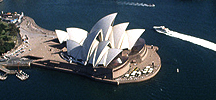Victoria Public vs Private Schools: Key Differences
Victoria, one of Australia’s most education-focused states, offers a diverse, inclusive, and comprehensive schooling system. For international students, choosing between public and private schools in Victoria is a pivotal decision in the study abroad planning process.
This guide will break down the core differences between public and private schools in Victoria across several dimensions.
1. Number and Distribution of Schools
In Australia, public schools are directly operated by state governments, while private schools are generally managed by religious institutions or non-profit organizations.
Victoria's School Distribution:
Public Schools: Approximately two-thirds of schools in Victoria are public, while the remaining third are private. This distribution is similar to New South Wales.
Private Schools: Concentrated in affluent communities and traditional educational districts, such as Toorak, Kew, Brighton, Camberwell, and Malvern in Melbourne.
Public Schools: More widely distributed across the city and suburbs, mainly serving local residents but also admitting international students.
High-Ranking Schools in Melbourne:
Public schools like Melbourne High School and Glen Waverley Secondary College perform exceptionally well, despite private schools having a larger presence in rankings.
2. Academic Quality and Rankings
In the 2024 Australian High School Top 100 Rankings, 23 public schools from Victoria made it to the list, representing about 20% of the top 100, while the majority are private schools. Though private schools dominate the rankings, top-tier public schools maintain high academic standards.
Private Schools:
High overall educational quality, particularly in VCE (Victorian Certificate of Education) results.
Many students from private schools successfully gain admission to prestigious universities like University of Melbourne and Monash University.
Public Schools:
Academic performance is generally average across the system, but elite public schools have a strong academic reputation.
Admission to these schools often requires a selection exam.
3. Admission Requirements
Private Schools:
Most top private schools require students to submit AEAS (Australian Education Assessment Services) scores.
Minimum AEAS scores for popular schools typically range from 70-80 points.
Additional criteria may include interviews and current academic records.
Public Schools:
Public schools generally have lower entry requirements and do not require AEAS.
International students typically apply through the Victoria Department of Education’s International Education Unit.
Elite public schools may require a local selection exam.
4. Tuition and Accommodation
Private Schools:
Annual tuition fees range from AUD 30,000 to 60,000.
Many premium schools offer on-campus boarding facilities or partner with homestay programs. One parent may accompany students under 18 as a guardian.
Public Schools:
Annual tuition fees range from AUD 15,000 to 20,000.
Students usually require a parent to accompany them or arrange homestay accommodations, which are typically coordinated by the education department or partnered agencies.
5. Faculty and Facilities
Private Schools:
Private schools generally invest heavily in resources and have top-tier facilities, including music halls, science labs, art centers, and sports complexes.
They can attract experienced teachers through competitive recruitment and training processes.
Public Schools:
Resources are allocated by the government, with some schools offering very basic facilities.
Teacher recruitment and training are centralized by the state education department, leading to more uniform teaching quality across public schools.
6. Student Composition and Language Environment
Private Schools:
The proportion of international students is around 5%. These schools tend to focus on small class sizes and elite education, with a higher concentration of Chinese students.
Public Schools:
International student proportion is around 10%. Public schools have a more diverse cultural mix, helping students integrate into mainstream Australian society and providing a better language environment.
Conclusion and Advice
Choosing between public and private schools in Victoria ultimately depends on factors like the student’s unique needs, family budget, target university, and future goals.
Private schools offer superior facilities, smaller class sizes, and high academic standards, particularly for students who aim for top-tier universities.
Public schools, while more affordable, still provide a good education, especially at elite schools with competitive entry requirements.
We recommend parents work with education consultants to design a personalized study plan based on the student’s academic background and language proficiency.
If you want specific details about school entry requirements or planning pathways, feel free to contact us for one-on-one professional advice!








